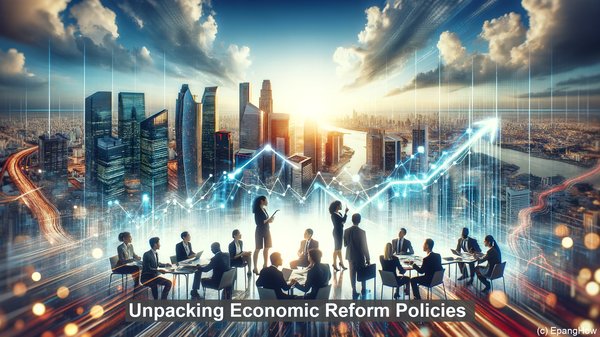Introduction: Navigating Economic Transformations
Greetings, ladies and gentlemen! In the realm of economic development, two terms often emerge: structural adjustment programs and economic reform policies. While they may appear synonymous, a closer examination reveals their divergent nature and implications. Join me as we embark on this exploration of contrasting strategies for economic transformation.
Defining the Terms: Structural Adjustment Programs
Structural adjustment programs, commonly abbreviated as SAPs, are comprehensive packages of economic policies and measures. They are typically implemented in response to a country’s balance of payment crisis or economic instability. SAPs are often prescribed by international financial institutions, such as the International Monetary Fund (IMF) or the World Bank, as a condition for financial assistance. These programs aim to address macroeconomic imbalances, promote fiscal discipline, and enhance competitiveness in the global market.

Unpacking Economic Reform Policies
On the other hand, economic reform policies encompass a broader range of measures aimed at transforming an economy. These policies can be initiated by a country’s government, often as part of a long-term development plan. Unlike SAPs, economic reform policies are not necessarily tied to a specific crisis or external conditionality. They can encompass various aspects, such as trade liberalization, tax reforms, privatization, and investment promotion. The objective is to create an enabling environment for sustained economic growth and development.
Policy Focus: Short-term Stabilization vs. Long-term Growth
One of the key distinctions between SAPs and economic reform policies lies in their temporal focus. SAPs are primarily geared towards short-term stabilization. They often entail measures like austerity, currency devaluation, and reduction in public spending. The aim is to restore macroeconomic stability and address immediate imbalances. In contrast, economic reform policies tend to have a longer-term perspective. They emphasize structural changes, such as improving institutions, enhancing productivity, and diversifying the economy. The objective is to foster sustainable and inclusive growth over time.
External Influence vs. Domestic Ownership
Another notable difference is the degree of external influence and domestic ownership. As mentioned earlier, SAPs are often prescribed by international financial institutions. While they may take into account a country’s specific circumstances, they are typically designed based on a standardized framework. This can sometimes lead to criticism of ‘one-size-fits-all’ approaches. In contrast, economic reform policies are usually developed domestically, taking into account the country’s unique context and priorities. This can enhance ownership and ensure policies are better tailored to local needs.

Social Implications: Balancing Priorities
Both SAPs and economic reform policies can have significant social implications. SAPs, with their focus on short-term stabilization, can sometimes lead to social hardships. Austerity measures, for example, can result in reduced public spending on essential services like healthcare and education. This can disproportionately affect vulnerable populations. Economic reform policies, while aiming for long-term growth, need to ensure inclusivity. They should be accompanied by measures to address income inequality, create employment opportunities, and safeguard social welfare.
